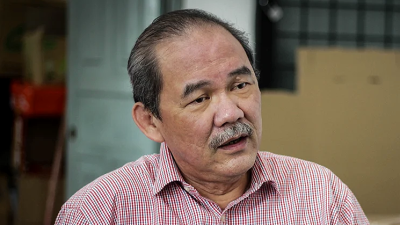
By Dr Wan Kim Sui, Professor Dr Moy Foong Ming and Professor Dr Noran Naqiah Hairi
The 4th of April marks World Physical Activity Day, a global movement to get people to be more physically active. This could not be more suitable as physical inactivity has become a global public health problem and is the fourth leading risk factor for global mortality.
The statistics of non-communicable diseases (NCDs) in Malaysia are worrying. The 2019 National Health and Morbidity Survey reported that 50.1% of our adult population were overweight or obese, 30.0% had hypertension and 18.3% diabetes. Meanwhile, 25.1% of adults were physically inactive, a reduction compared to 2015 (33.5%).
Regular physical activity is a protective factor for obesity and NCDs such as hypertension, diabetes, heart disease, stroke, and breast and colon cancer. It is associated with improved mental health, delay in dementia onset and enhanced quality of life.
Physical activity is also an indispensable tool in the prevention and management of diabetes mellitus. Regular physical activity is universally recommended in all clinical guidelines on diabetes management. Regular physical activity can improve the ABC control among type 2 diabetes patients.
A is for A1C that reflects the blood sugar control over the past three months, B for blood pressure and C for cholesterol. Specifically, physical activity increases the HDL-cholesterol (good cholesterol) and reduces triglycerides (the most common fat in the bloodstream).
What are some types of physical activity for us to choose from?
Aerobic exercise involves repeated and continuous movement of large muscle groups such as walking, jogging, cycling and swimming. Resistance or strength training includes activities with body weight, free weights, weight machines or resistance bands. Flexibility exercise such as stretching improves the range of motion around joints, while balance training reduces fall risk. Flexibility and balance exercises are important for older adults with diabetes. Physical activities like yoga and tai chi combine flexibility, balance and resistance activities.
How can I be more physically active?
1. Reduce the time spent in daily sedentary behavior such as prolonged sitting. (Too much sitting is an independent health risk and distinct from too little exercise.) Interrupt lengthy sitting time with bouts of light activity every 30 minutes.
2. Build more activity into our day. Some practical tips include using the stairs instead of the lift or escalator and parking further away and walking the rest of the way.
3. Carry out a structured exercise program. The universal recommendations are
Moderate-intensity aerobic activity such as brisk walking for at least 150 minutes per week, i.e., 30 minutes a day, five days a week. AND muscle-strengthening activities on two or more days a week. OR
Vigorous-intensity aerobic activity such as running for at least 75 minutes every week AND muscle-strengthening activities on two or more days a week.
We can gain even more health benefits if we go beyond the recommended duration.
4. Choose an activity that you like and able to maintain for the long-term as a part of the lifestyle. For example, walking is most feasible for most people in terms of time and financial expenditure. If you own a smartphone or activity tracker, you could keep the target of walking 10,000 steps per day as a goal.
5. For individuals with chronic diseases, please discuss with your doctor before embarking on any physical activity program.
6. Remember, every step counts!
(Dr Wan Kim Sui, Professor Dr Moy Foong Ming and Professor Dr Noran Naqiah Hairi, Department of Public Health, University Malaya Medical Center.)
ADVERTISEMENT
ADVERTISEMENT


































